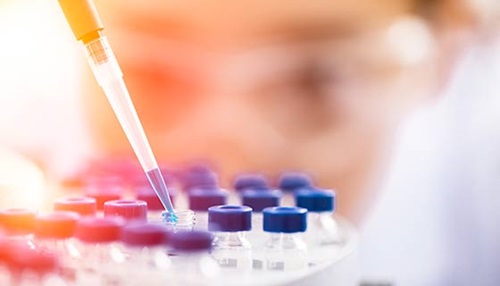COVID-19 and POTS: Is There a Link?
Featured Expert
Although many people recover quickly from COVID-19, the disease caused by the coronavirus known as SARS-CoV-2, others may experience symptoms for months. Researchers are still determining the cause of these extended symptoms, but some people with “long-haul” COVID-19 may be dealing with a known condition called postural orthostatic tachycardia syndrome. This condition, also called POTS, affects involuntary nervous system functions such as heart rate and blood pressure, usually upon standing from a reclining position.
Tae Chung, M.D., a neuromuscular specialist and rehabilitation physician, is director of the Johns Hopkins POTS Program. He explains what we know about post-COVID POTS and how to get a diagnosis.
What is post-COVID POTS?
POTS can be triggered by a variety of conditions, including viral or bacterial infections. Some researchers believe that the coronavirus that causes COVID-19 can be a trigger for POTS, as an increased number of people who recovered from COVID are experiencing POTS-like symptoms, such as brain fog, tachycardia (increased heart rate) and severe chronic fatigue. The similarity in symptoms led doctors to start testing patients for POTS.
The autonomic nervous system regulates functions we don’t consciously control, such as heart rate, blood pressure, sweating and body temperature. Malfunction in any of these areas can produce symptoms that may be shared by numerous conditions. Doctors who are not familiar with POTS may dismiss these symptoms as lingering effects of COVID — or even as psychological symptoms. POTS can be debilitating and requires specific treatment, so an accurate diagnosis is vital.
Are people with more severe cases of COVID-19 more likely to develop POTS?
The research in this area is ongoing. However, most people who experienced post-COVID POTS had only mild COVID symptoms before developing chronic symptoms.
I have lingering COVID-19 symptoms. How do I know if it’s POTS?
You should talk to your doctor if you have had COVID-19 and are experiencing ongoing symptoms, including:
- Severe fatigue
- Lightheadedness
- Brain fog
- Memory problems
- Shakiness
- Headaches
- Spiking pulse rate with minimal or mild physical activity
- Chronic nausea and vomiting
Your doctor will first try to rule out other complications. “We are being very careful with regard to diagnosing our patients with POTS, as we know COVID-19 can cause blood clots or scars in the lungs, which can cause symptoms similar to POTS but would require very different treatment,” explains Chung.
“At Johns Hopkins, we consult a team of doctors from physical medicine and rehabilitation, pulmonary and critical care medicine, and neurology, who work together to carefully rule out various causes of long-lasting symptoms from a COVID-19 infection,” says Chung. “Once other lingering conditions are ruled out, you may be referred to a specialist to start the process of getting diagnosed with POTS.”
What is treatment like for post-COVID POTS?
The main goal of the initial treatment for POTS is to increase blood volume return to the heart, also known as volume expansion therapy. This therapy uses various medication-based and nonmedication treatments. However, this treatment approach should be personalized based on each person’s health and medical history. “If POTS is confirmed, we generally start aggressive hydration, dietary modifications and certain medications,” says Chung.
Physical therapy is also a key to significantly increasing blood volume for people with POTS. However, it often takes months before patients respond to other treatments sufficiently to be ready for a physical therapy regimen. “I think ‘don’t give up’ is probably one of the most important principles of the treatment,” Chung explains.
Treatment The Johns Hopkins POTS Program

The Postural Orthostatic Tachycardia Syndrome Program at Johns Hopkins brings together specialists in rehabilitation, cardiology, neurology, physical therapy and other fields to provide well-rounded care for patients with POTS. Our team has developed treatment protocols for children and adults with POTS to help you effectively manage your symptoms and have more control over this disabling and unpredictable condition.
What if I had POTS before getting sick with COVID? Will my condition worsen?
As with any viral infection, COVID-19 can temporarily worsen POTS symptoms, which could make recovery harder. Because COVID is a new disease, its long-term effects in people with POTS are not well known.
“If you have POTS and contract COVID-19, you should work with your doctor to manage your symptoms while you recover,” says Chung. “This might include a temporary dosage increase for certain medications, as well as dietary adjustments.”
What’s next for post-COVID POTS research?
The COVID-19 pandemic has created a unique research opportunity for physicians interested in POTS. In many patients with POTS, it can be difficult to pin down the cause of the condition. In patients with POTS after COVID-19, the cause is clear, and researchers can compare these patients with those who recovered fully from the virus. There’s hope that this cohort of patients will help further research into treatment for all people who have POTS. “I am planning to develop many different research projects out of my work with patients, so we can better understand and treat the long-lasting symptoms after COVID-19 infection,” Chung says.







